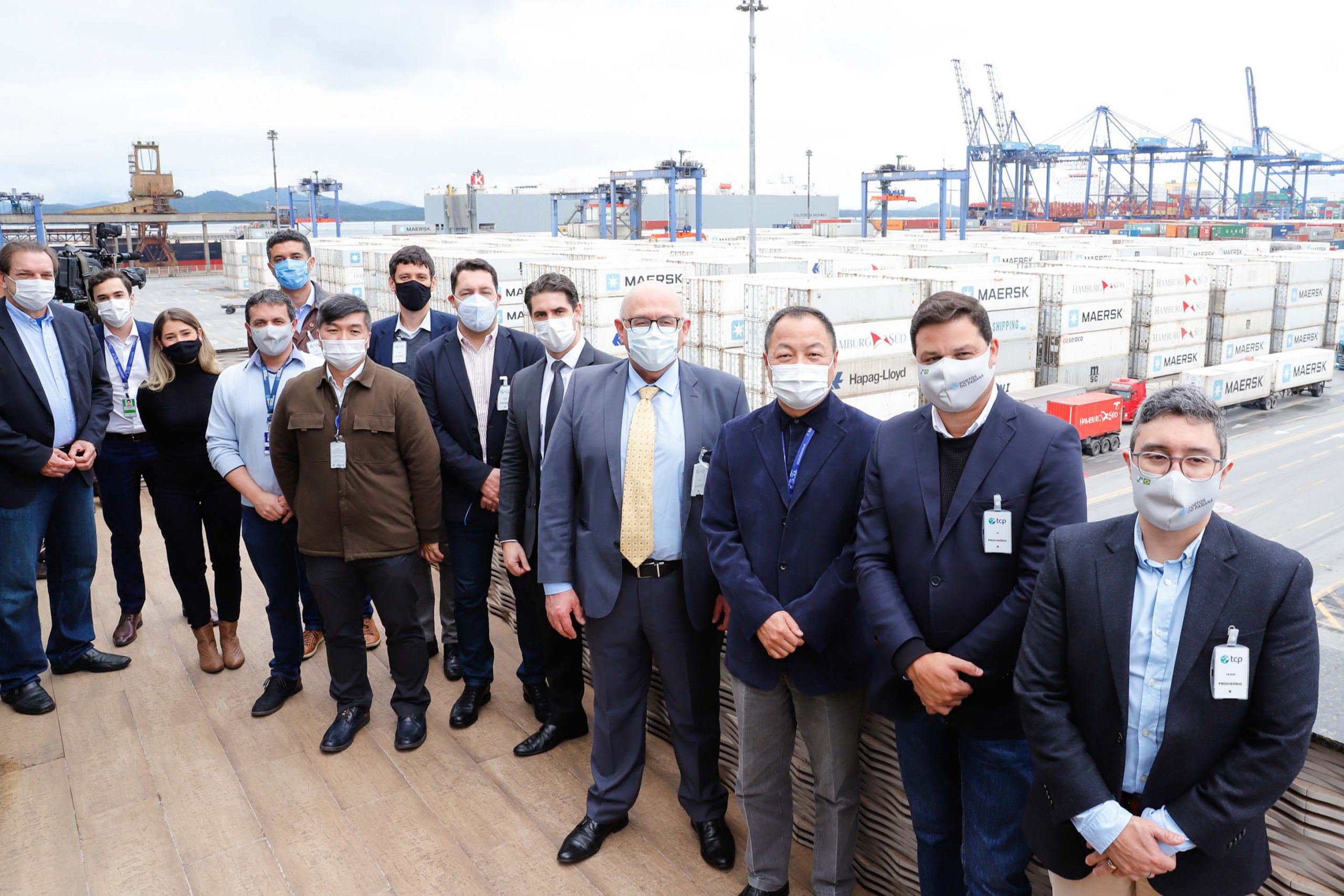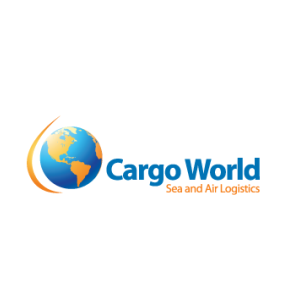A team from the Ministry of Infrastructure was on Tuesday (22) at the Port of Paranaguá to get to know part of the structure, to analyze what will be the impact and the best solutions for the city’s rail network with the construction of Nova Ferroeste. During the technical visit, they were accompanied by a group from the state government, led by the Secretary of Infrastructure and Logistics, Sandro Alex, together with members of the Working Group of the State Railway Plan.
Fulfilling the planning plan for the new railroad, the agenda included a visit to the Paranaguá Container Terminal (TCP) and to the general administration of the public company Portos do Paraná. The federal government team was received by the CEO of Portos, Luiz Fernando Garcia, and by the commercial vice-director of TCP, Tomas Lima, and saw up close how the arrival of containers, storage and loading on ships happens.
The delegation evaluated the structure and learned about the expansion plans to receive the new volume of cargo that will be generated by the construction of a second railway in the state. “The Nova Ferroeste project is very important for improving the railway infrastructure in the south of the country because a large part of the flow of grains in the Center-South region of Brazil is still very dependent on the road mode,” said the special advisor to the Ministry of Infrastructure, Marcos Felix.
The Nova Ferroeste project foresees a new descent through Serra do Mar, using the escape area of the BR-277. Upon arrival in Paranaguá, Rumo Logística, which holds the concession for the current route, and Nova Ferroeste will share the track to access the Port of Paranaguá. Therefore, the idea is to align the two routes to optimize the existing structure and minimize the impact generated by the increase in the volume of cargo that will come from Mato Grosso do Sul and West Paraná.
The team was also at one of the critical points in the connection of the two networks, at Rua Roque Vernalha. The technicians must seek a joint solution to reduce the train’s impact on the city, one of the biggest current problems, according to a study by the Railway Safety Program (Prosefer) carried out by the DNIT (National Department of Infrastructure and Transport).
Curitiba, which is outside the Nova Ferroeste route, will also benefit from the project, as it will have an alternative for the passage of cargo towards the Port of Paranaguá.
“We will not only remove the whistle, but mainly this volume of cargo from the Center of Curitiba, which also brings more speed to the arrival at the port. Today we are not competitive. It’s a five-day trip,” said Sandro Alex. “This is an investment in infrastructure that ensures the development of the State”.
Technicians from the Ministry and the State Government will continue the schedule of visits this week in Cascavel and Foz do Iguaçu.
PORT – The port of Paranaguá is the second largest in Brazil in general handling, being the first in the export of frozen chicken and vegetable oil and the second in the handling of soy, sugar, paper, meat and alcohol. In May, it reached a new record for cargo handling in a single month: 6,081,904 tons transported. The volume is historic and, for the first time, Paraná terminals surpass the level of 6 million tons handled in thirty days.
In the first five months of this year, the ports of Paraná accumulated 24,343,390 tons handled. Of this total, 77% arrived or left via the highway. In May alone, 4,698,159 tons were transported by truck. The modal, however, had a 3% drop in participation, compared to the same month in 2020, when it accounted for about 81% of the total.
The percentage was absorbed by the railway modal, which grew in this exact proportion, going from 17.80% (1,017,637 tons) in May last year to 20.77% (1,262,209 tons) last month.
Currently, Paranaguá has 70 kilometers of railway lines, 7.5 of them installed in the Export Corridor. The integration between the port and the railway is essential to ensure competitiveness and efficiency in operations, as the trains offer regularity in the operational flow and safety in transport.
According to the CEO of Portos do Paraná, Luiz Fernando Garcia, the capacity for railway unloading at the Port of Paranaguá is 32 million tons/year, which is equivalent to 1,785 wagons per day.
“Today, a single wagon can transport 45 tons of products, that is, five tons more than a truck. To get an idea of how this capacity has a direct impact on traffic on the highways and in the city, it is necessary to consider that, to load a ship, 1,500 wagons are needed, while the same amount of cargo would need 1,800 trucks for transport,” he said.
CARGO – Among the main products transported in Paranaguá, transported by rail, stand out sugar (80%), corn (35%), soy (28%) and bran (18%), in addition to containers (12%), vegetable oils (4%) and fertilizers (2%).
For unloading grain via rail, the Export Corridor of the Port of Paranaguá and the Public Silo have two hoppers – equipment for receiving and disposing of products.
The Container Terminal of Paranaguá (TCP) is the Brazilian market leader in the modal. The terminal is the only one in the country with a direct rail connection and 15% of the cargo handled, around 6,000 containers/month, arrives by rail.
NOVA FERROESTE – The 1,285-kilometer stretch of the new railroad will connect Maracaju, in Mato Grosso do Sul, to the Port of Paranaguá, creating one of the most important export corridors in the country. 54 million tons per year.
The area of indirect influence covers 925 municipalities in three countries. There are 773 from Brazil, 114 from Paraguay and 38 from Argentina. In Brazil, it directly impacts 425 cities in Paraná, Mato Grosso do Sul and Santa Catarina, totaling around 9 million people. The area represents 3% of the Brazilian Gross Domestic Product (GDP).
The forecast is that the feasibility studies will be completed in September and the environmental impact studies in November. The intention is to put the railroad up for auction on the Brazilian Stock Exchange (B3), headquartered in São Paulo, soon after. The consortium that wins the tender will also be responsible for the works.
ATTENDANCE – The delegation included the CEO of Ferroeste, André Gonçalves; the coordinator of the Work Group of the State Railway Plan, Luiz Fagundes; the manager of Strategic Affairs at Fiep, João Arthur Mohr; and directors of Portos do Paraná.
Source: Portos do Paraná / Agência de Notícias do Paraná







